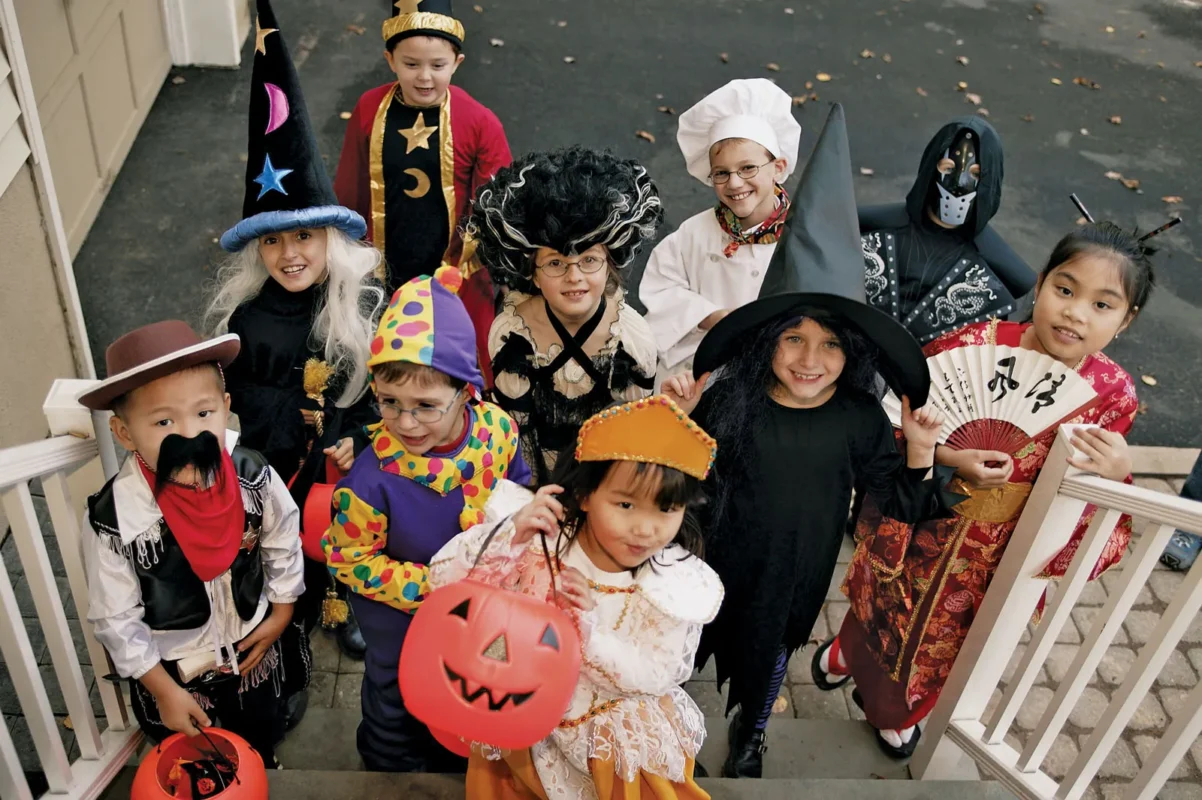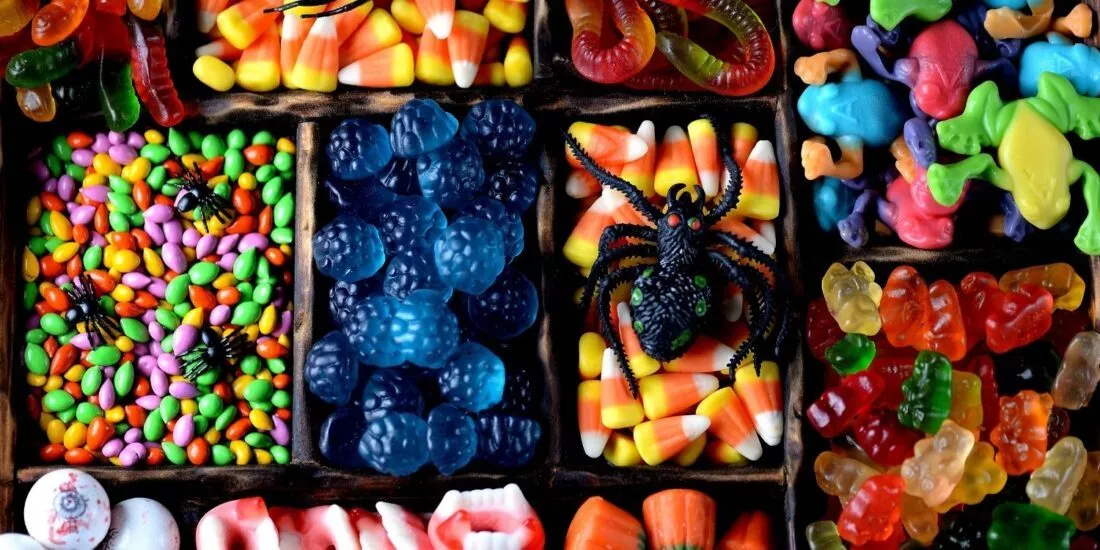SPORT & LIFESTYLE NEWS
Why Do We Have Halloween?
Halloween, celebrated on October 31st, is a festive occasion marked by costumes, trick-or-treating, and spooky decorations. But have you ever wondered “Why Do We Have Halloween?” The origins of this holiday are deeply rooted in a blend of ancient traditions, cultural influences, and historical events.
Why Do We Have Halloween?
Halloween’s origins are closely linked to the ancient Celtic festival known as Samhain. The word “Samhain,” pronounced “sow-in,” represents a crucial time of year for the Celts, who lived in what is now Ireland, the United Kingdom, and northern France. This festival was celebrated from the evening of October 31st through November 1st and marked a significant transitional period: the end of the harvest season and the beginning of winter.

For the Celts, Samhain was not just a change in seasons but a deeply spiritual time. It was believed that during this festival, the veil between the living and the dead became exceptionally thin. This thinning of the veil allowed the spirits of the deceased to return to the earthly realm, as well as other supernatural beings. The Celts thought that these spirits could interact with the living in various ways, some of which could be troublesome or harmful.
To protect themselves from the potentially malevolent spirits and to honor the dead, the Celts engaged in several key customs. During this time, people would light bonfires and wear costumes to ward off these wandering spirits. They believed that the presence of ghosts could cause trouble, so they took precautions to protect themselves and their homes.
- Bonfires: Large communal bonfires were lit to ward off evil spirits and to provide light and warmth as the nights grew longer and darker. The fire was believed to have protective properties, both for the people and their livestock.
- Costumes: People would dress in costumes, often made from animal skins or other disguises, to hide their identities from the wandering spirits. The idea was that by disguising themselves, they could blend in with the spirits and avoid being recognized or harmed.
The belief in spirits and the need to protect oneself from them drove these customs. The Celts saw Samhain as a time when their world and the spirit world intersected, making it necessary to take extra precautions to safeguard against any potential negative influences from the spirit realm. The bonfires served as both a physical and symbolic means of protection, while costumes were a way to avoid unwanted attention from supernatural beings.
The Influence of Christianity
As Christianity spread across Europe during the early medieval period, it encountered a diverse array of pagan traditions and festivals. In an effort to convert the pagan population, the Catholic Church sought to integrate and transform these existing customs rather than completely eradicate them. This approach allowed for a smoother transition to Christianity while preserving some of the cultural practices that were deeply rooted in the local communities.

One significant example of this integration is the establishment of November 1st as All Saints’ Day. This feast day was designated by the Catholic Church to honor all saints and martyrs who did not have their own specific feast days. All Saints’ Day, also known as All Hallows’ Day, was intended to celebrate the virtues and sacrifices of saints, creating a religious counterpoint to the pagan celebrations that preceded it.
The evening before All Saints’ Day, October 31st, became known as All Hallows’ Eve. The term “All Hallows’ Eve” was a direct reference to the night before All Hallows’ Day. Over time, this term was contracted to “Halloween,” reflecting the linguistic evolution and the blending of cultural traditions. The Catholic Church’s intention was to supplant the pagan rituals with Christian practices, aligning the timing of religious observances with established local customs.
Despite these efforts, many traditional customs and celebrations associated with Samhain persisted. The rituals of Samhain, which included lighting bonfires, wearing costumes, and making offerings, continued to be practiced alongside the new Christian observances. This persistence of pagan elements led to a fusion of Celtic and Christian traditions, gradually shaping the holiday into the Halloween we recognize today.
The result was a unique blend of old and new. The festival retained much of its original character, including themes of the supernatural and the supernatural’s interaction with the living, while incorporating Christian elements of remembrance and reverence. The evolution of Halloween is a testament to how cultural practices can adapt and merge over time, creating a holiday that reflects a rich tapestry of historical influences.
Modern Celebrations
In the present day, Halloween is a global phenomenon celebrated across many countries, each bringing its own distinct customs and traditions to the occasion. This widespread observance reflects Halloween’s evolution from its ancient origins into a modern, multifaceted celebration that embraces a wide range of activities and cultural expressions.
In the United States and Canada, Halloween is perhaps most famously marked by trick-or-treating, where children dress up in costumes and go door-to-door collecting candy from neighbors. This tradition is accompanied by elaborate decorations, including haunted houses and spooky yard displays that transform neighborhoods into eerie wonderlands. Pumpkin carving has also become a quintessential part of Halloween, with families and individuals creating intricate designs on pumpkins, which are then displayed as Jack-o’-lanterns to light up the night.

In Mexico and other Latin American countries, Halloween is closely linked to Día de los Muertos, or the Day of the Dead, which takes place on November 1st and 2nd. This celebration honors deceased loved ones with vibrant altars, colorful decorations, and traditional foods. The melding of Halloween with Día de los Muertos in these regions results in a unique blend of spooky and solemn observances, with both traditions celebrated side by side.
In the United Kingdom and Ireland, Halloween retains strong connections to its Celtic roots. Traditional activities such as apple bobbing and bonfires are popular, and some communities hold ghost tours and storytelling events that delve into the area’s folklore and haunted history. Costumes are also a big part of the celebration, with many people attending costume parties and participating in parades.
In Australia and New Zealand, Halloween has become increasingly popular in recent years. While the celebration is not as ingrained in the culture as in North America, it is growing in prominence. Australians and New Zealanders often enjoy costume parties, themed events, and trick-or-treating, albeit on a smaller scale compared to the U.S. and Canada.

In countries like Japan and South Korea, Halloween is celebrated in a more modern and commercialized fashion. Large-scale Halloween events, costume parades, and themed parties are common, especially in urban centers. These celebrations often emphasize the festive and entertaining aspects of Halloween, with less focus on the traditional or spooky elements.
Across the globe, Halloween has become a vibrant and diverse celebration of all things spooky and fun. Whether it’s the eerie thrill of haunted houses, the creativity of pumpkin carving, the excitement of costume parties, or the allure of ghost tours, Halloween offers something for everyone. The holiday’s ability to adapt and incorporate various cultural elements has made it a truly universal celebration, embracing a wide range of customs and traditions while retaining its core themes of the supernatural and the playful.
Get ready for a Halloween like no other with our exclusive Halloween Hawaiian Shirts from AlibayTrendy Store! These unique shirts combine the festive spirit of Halloween with the vibrant, laid-back style of Hawaiian fashion, making them perfect for any Halloween party or casual get-together.
